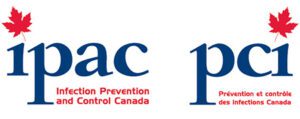Air Testing vs a Mold Inspection
Air Testing vs Mold Inspection vs Both
Since we offer both air and mold testing we’ve been asked recently by our customers about whether or not they should they get an air test or a mold inspection or perhaps they should get both done at the same time.
Our answer depends on what the situation is that you are experiencing.
These points can be followed when considering a mold inspection and / or an air sample test.
- When visible mold is not present, but the smell of mold is. Here a mold inspection and an air sample test can reveal whether there are indeed elevated mold spore levels and where it is located.
- There have been plumbing leaks or water issues and there is a suspicion that elevated mold may exist in the air and/or behind walls.
- Post Mold Removal Clearance Testing to ensure that the previous mold issues has been resolved and mold counts have returned to levels found in normal environments of the same type.
- Health Concerns: In some cases a doctor or the patient has a health issue that they cannot pinpoint the cause but seems to be related to mold symptoms (coughing, sneezing, headaches. Here, a mold inspection and air sample test may help to confirm whether the doctor’s or patient’s suspicions that a mold problem exists.
- For real estate transactions for the protection of Buyers and Sellers.
- Landlord/Tenant disputes as to whether there is a mold problem.
- Someone thinks they see or smell mold but are not sure.
- Someone is interested in a general Indoor Air Quality test of their environment.
A Quick Checklist to determine what type or combination of test you need
Here is a quick checklist you can use if you’re not sure;
Mold Inspection
We recommend a mold inspection;
- If you see a visible patch of mold, (could be a number of different colours and not just black, , on anything organic, (such as cardboard, cloth, paper, drywall, wood or any other organic material, (https://en.wikipedia.org/wiki/Organic_matter).
- You smell something that smells musty or damp
- You have recently had a leak in a certain area, (say from a toilet on the second floor that has affected the ceiling on the first floor), or you’ve begun a renovation an opened up an area have found dried old mold.
- When purchasing a home or renting an apartment
Air Sample Testing
Air samples are good for use as a way of insuring that there isn’t a large source of mold not yet found somewhere in a home. This is our sampling methods can find long chains of spores that are still intact. These chains normally break apart quickly as they travel through the air, so a sample that reveals intact chains can indicate that there is mold nearby, possibly undiscovered during other tests and visual examination.
Taking air samples during a mold inspection is important for several reasons. Mold spores are not visible to the naked eye, and the types of mold present can often be determined through laboratory analysis of the air samples. Having samples analyzed can also help provide evidence of the scope and severity of a mold problem, as well as aid in assessing human exposure to mold spores.
We recommend an Air Sampling Test for mold if;
- You are considering buying a home
- You are considering renting an apartment or home.
- If you are suffering from a number of the symptoms of mold exposure, but cannot pinpoint a specific area in your home that may have a mold issue
- Best taken if visual, non-invasive mold inspection reveals apparent mold growth or conditions that could lead to growth, such as moisture intrusion or water damage. Musty odors can also be a sign of mold growth.
When we are called in to provide an air sample of a home it usually takes about an hour and can provide us with important information that we would not get with a mold inspection. We can use the results from the air sample to provide us with the concentration and type of mold spores present in your homes interior.
We take our samples of your air through a sampling pump that forces air to pass through a sample container that captures what is floating around. We will need to take three samples;
- Sample 1 – Typically our first sample will be taken outdoors. This will act as our, “control” sample that tells us what is naturally occurring at the time of the test. y in the outdoor environment
- Sample 2 – Indoor at the HVAC unit, (furnace / heat pump or boiler location).
- Sample 3 – Indoor in the most lived-in and active room of the house.
Now, air samples can be used to gather data about mold spores present in the interior of a house. These samples are taken by using a pump that forces air through a collection device which catches mold spores. The sample is then sent off to a laboratory to be analyzed.
Air-Sampling Devices
There are several types of devices used to collect air samples that can be analyzed for mold. Some common examples include:
- impaction samplers that use a calibrated air pump to impact spores onto a prepared microscope slide;
- cassette samplers, which may be of the disposable or one-time-use type, and also employ forced air to impact spores onto a collection media; and
- airborne-particle collectors that trap spores directly on a culture dish. These may be utilized to identify the species of mold that has been found.
Difficulties and Practicality of Air Sampling
It is helpful to think of air sampling as just one tool in the tool belt when inspecting a house for mold problems. An air sample alone is not enough to confirm or refute the existence of a problem, and such testing needs to be accompanied by visual inspection and other methods of data collection, such as a surface sample. Indoor airborne spore levels can vary according to several factors, and this can lead to skewed results if care is not taken to set up the sampling correctly. Also, since only spores are collected with an air sample and may actually be damaged during collection, identification of the mold type can be more difficult than with a sample collected with tape or a cultured sample.
Air samples are good for use as a background screen to ensure that there isn’t a large source of mold not yet found somewhere in a home. This is because they can detect long chains of spores that are still intact. These chains normally break apart quickly as they travel through the air, so a sample that reveals intact chains can indicate that there is mold nearby, possibly undiscovered during other tests and visual examination.
In summary, when taken under controlled conditions and properly analyzed, air samples for mold are helpful in comparing relative particle levels between a problem and a control area. They can also be crucial for comparing particle levels and air quality in an area before and after mold remediation.
Why not buy a home mold test kit and do it yourself?
Why Over-The-Counter Home Mold Tests Kits Are Not necessarily accurate.
- Mold samples are often misleading or simply wrong (i.e. due to error). You need a professional to interpret the results.
- Home Mold Test Kits don’t include a visual inspection conducted by a mold professional … very important! A professional mold inspection includes not only sampling but also a comprehensive visual inspection to detect issues and problems related to mold that are not apparent to most people without training in building sciences and mold inspections.
- Mold is everywhere. Yes, all homes have small amounts of mold. Therefore, when a petri dish from a home mold test tells you that you have mold, it is not telling you anything useful since every home has mold!
- If you suspect a mold problem but do not actually see it or smell it, these test kits do not help you locate the problem or tell you how serious it is.
- Don’t take our word for it. Here is what the U.S. Government EPA says, verbatim: “Sampling for mold should be conducted by professionals who have specific experience in designing mold sampling protocols, sampling methods, and interpreting results. Sample analysis should follow analytical methods recommended by the American Industrial Hygiene Association (AIHA), the American Conference of Governmental Industrial Hygienists (ACGIH), or other professional organizations.” Our testing and mold removal procedures follow the highly respected protocols of the IICRC S520 Guideline Manual.

Maple Leaf Mold Inc. is a certified mold / asbestos removal and biological disinfection / air analysis company located in Toronto that uses certified IICRC technicians for all testing and remediation projects.
We are a professionally licensed firm experienced in testing, verifying and removing Mold / Asbestos / Lead and other environmental contaminants as well as providing disinfection services to control and kill biological contaminants.
Call 416-254-7256 to talk with us about your issue anytime.



